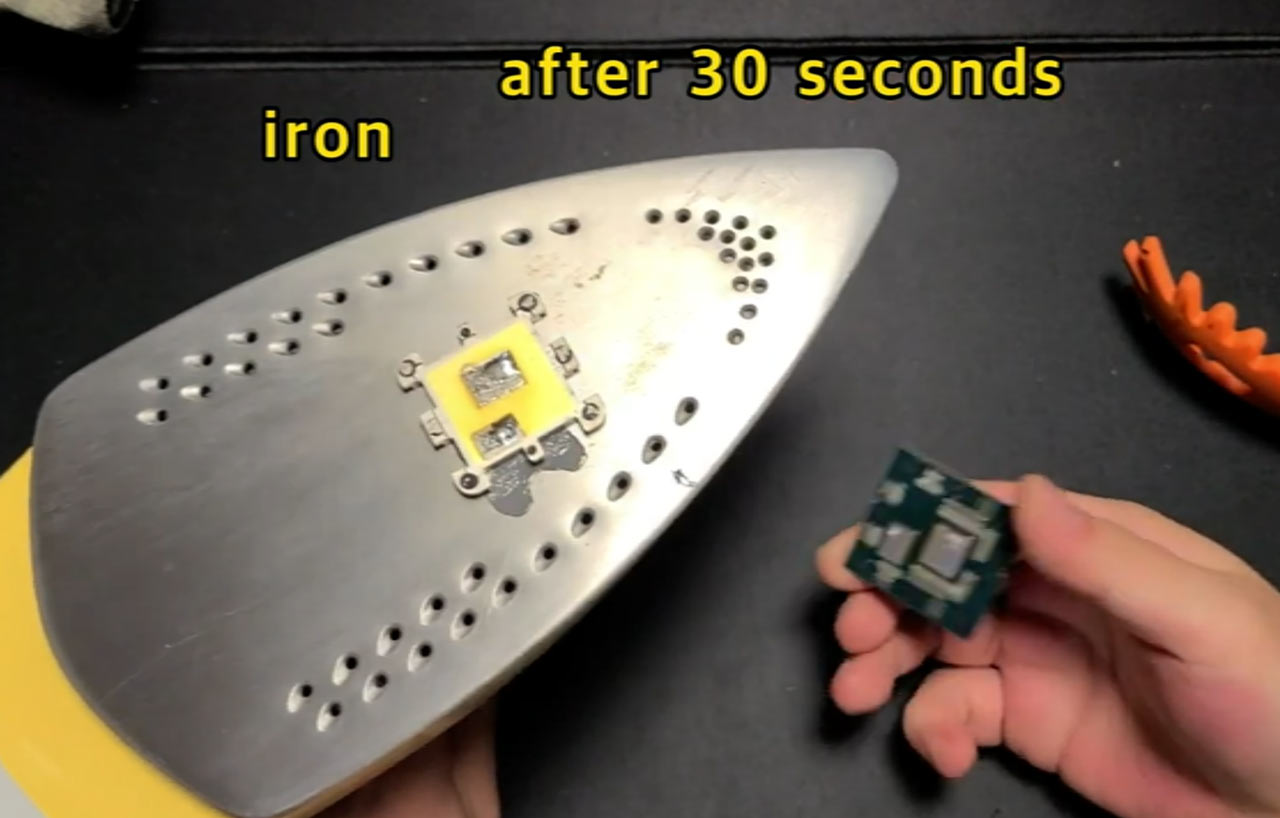YouTuber Uses Dental Floss To Delid Ryzen 7000
A South Korean YouTuber has shared a quick and slick method for delidding one of AMD’s latest and greatest Zen 4 desktop CPUs. Tassi Ham published a brief Shorts video, showing how to quickly remove an AMD Ryzen 7000 series integrated heat spreader (IHS) using nothing more than a little dental floss and a household iron.
There is a certain technique to be observed before attempting this dental floss delidding technique on your own precious new Ryzen 7000 series CPU. The essential step in using floss to detach AMD’s IHS is threading the flossing thread behind an ‘octopus’ leg (the tabs that secure the IHS to the CPU), and then pulling the loop slowly yet firmly towards you, and away from the CPU. Continue to do this for each of the eight legs, and you have completed step one of two.
Watching Tassi Ham complete this octopus leg detaching process isn’t as nerve-wracking as a typical delidding video with sharp metal tools involved. The slim, possibly waxed (mint is my favorite), thread at no time threatens the delicate exposed surface mount electronic components near the octopus leg fixing points. During the act of slicing through the fixing glue, the process seems smooth and doesn’t look like it requires a great deal of exertion for success.
Step two uses another regular household device: a clothes iron. Heat up your iron, with its surface pointing upwards to create a platform, then add a small blob of thermal paste (we don't advise using toothpaste for this) to the CPU IHS and place it (IHS-down) onto the hot surface of the iron. Just “30 seconds” later, the IHS will be ready to detach with very little effort. In the video, Tassi Ham used some spaghetti tongs, but most tongs or tweasers with soft (plastic, wood) grips would probably be suitable for this. Sadly, Tassi Ham fumbled this part, and dropped the delidded CPU on his desk, but there appeared to be no harm done.
Seeing a YouTuber upholding the true spirit of computer DIY, using surprising ‘tools’ anyone might have around the home for a delicate electronic process, is heartening. In some ways we are reminded of the overclocking pencil trick from the start of the millennium. Lastly, the ‘dental floss’ method makes custom CNC tools for Ryzen 7000 delidding, like this one from Der8auer, look somewhat over-engineered.
Get Tom's Hardware's best news and in-depth reviews, straight to your inbox.

Mark Tyson is a news editor at Tom's Hardware. He enjoys covering the full breadth of PC tech; from business and semiconductor design to products approaching the edge of reason.
-
kahveisteyen In this day it's quite baffling why AMD or Intel didn't start supplying delidded CPUs. They could at least prepare another line of enthusiast CPUs with limited warranty to certain OEMs.Reply
But iron and floss looks promising. The only problem left is torqueing the delidded CPU with the existing cooler. -
InvalidError Reply
Back before AMD and Intel started using IHS, cracked die were a common problem and I doubt either of them is eager to go back there on retail chips. The IHS is also a critical mechanical component of the retention mechanism on LGA sockets to distribute pressure evenly across the whole thing, very much necessary to make the normal mounting process at least somewhat idiot-resistant.kahveisteyen said:In this day it's quite baffling why AMD or Intel didn't start supplying delidded CPUs.
Also, when you have silicon power density likely north of 3W/sqmm in the worst spots, the slightest paste or mounting mistake could result in frying chips faster than on-die thermal sensors can tell anything happened.
For AMD and Intel, the IHS is a handy tamper-evident seal that save users from most common handling errors. -
bit_user Reply
I gather direct-die cooling is more of a "custom loop" -level technique. Probably not enough people willing to do it for most AIO brands to bother.bwana said:It's just as baffling that AIO manufacturers dont supply a 'delidded cpu' mounting kit -
bit_user Regarding the technique, I'd worry about the iron getting too hot and damaging the CPU. They can easily exceed 100 C, given their ability to quickly boil off water.Reply


